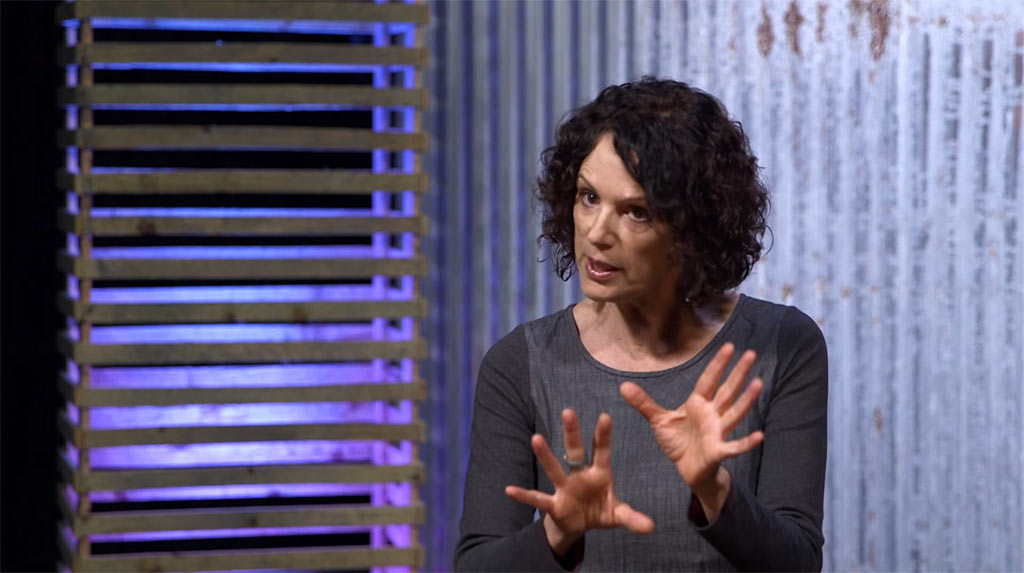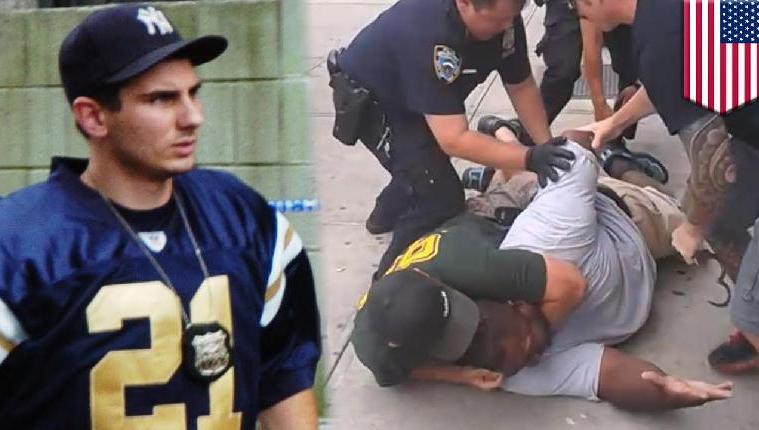
It has often been suggested that if you want to help, you should shut up and listen. In a February interview with The Guardian, for example, Robin DiAngelo said: “The problem with white people…is that they just don’t listen. In my experience, day in and day out, most white people are absolutely not receptive to finding out their impact on other people. There is a refusal to know or see, or to listen or hear, or to validate.”
"The theory of white fragility...becomes a tactic for rhetorically bullying anyone who is skeptical, or merely curious, about the validity of the theory’s claims. As such, it can easily allow for racism against white people."
DiAngelo, however, either fails or refuses to recognize a basic rule of intellectual inquiry for anyone who is interested in learning rather than indoctrination: listening is a necessary, but not sufficient, condition for understanding. In other words, asking questions, examining disagreements, and carrying on with a healthy skepticism are key parts of rigorous investigation and analysis.
The theory of white fragility asserts (for rarely does it argue) that a white person does not have much to say at all on racism; or rather, what he does say is almost certain to be unhelpful. He is so hopelessly entombed in implicit biases he has been internalizing since birth that his intentions are invariably at odds with the impact that his thoughts and actions have on people of color, primarily because such biases are rooted in the experience of whiteness in America. As a result, he is simply not equipped to see how privilege makes him complicit in the perpetuation of a racist society. Moreover, because he has been “socialized” to have a “white racial frame” that makes the frame invisible to him, he cannot but view society, and calibrate his participation in it, from a perspective of white racial superiority.[1]
This state of affairs gives rise to what DiAngelo calls “white fragility,” a condition in which “even a minimum amount of racial stress becomes intolerable, triggering a range of defensive moves.” Fragility is the status quo for white people, and naturally, a challenge to the status quo provokes and exposes it. White people react impulsively and acrimoniously when confronted with allegations that they support and maintain a racist society (by means of implicit bias and socialization), because they have not built the stamina to confront, and have not acquired the hermeneutic tools necessary to deconstruct, their inherent complicity in the perpetuation of norms that sustain systemic racial inequality, that is, “institutional racism.” What else is there for a white person to do, then, but shut up and listen to Whiteness scholars or people of color tell him how to fight racism? For example, in her Summer 2019 interview with Teaching Tolerance, DiAngelo explained:
I don’t call myself a white ally. I’m involved in anti-racist work, but I don’t call myself an anti-racist white. And that’s because that is for people of color to decide, whether in any given moment I’m behaving in anti-racist ways. And notice that that keeps me accountable. It’s for them to determine if in any given moment—it’s not a fixed location—I haven’t made it or arrived.
Notice that DiAngelo’s version of accountability excludes any provision for due process for the person receiving feedback. Anti-racist education is not presented as an exercise in introspection, but in indoctrination. Not only does a white person need to shut up and listen; feedback is to be received passively and with unremitting acquiescence. The only active participation permitted is a committed effort to internalize the feedback as part of an ongoing effort to deconstruct the ideologies and discourse that support privilege.[2]
This approach not only allows, but indeed encourages, discussion about “whether in any given moment I’m behaving in anti-racist ways” to be speculative rather than rigorous. Consider, for instance, Derald Wing Sue’s seminal paper on “Racial Microaggressions in Everyday Life.” For now, let’s ignore serious problems with the conceptual clarity and methodological rigor underlying the microaggression research paradigm, and simply take note of Sue’s introductory remarks that “[r]acial microaggressions are brief and commonplace daily verbal, behavioral, or environmental indignities, whether intentional or unintentional, that communicate hostile, derogatory, or negative racial slights and insults toward people of color,” and that alleged “[p]erpetrators of microaggressions are often unaware that they engage in such communications when they interact with racial/ethnic minorities.”
To illustrate, Sue draws on his own experience. Describing a plane ride with an African- American colleague from New York to Boston on “a small ‘hopper’ with a single row of seats on one side and double seats on the other,” he writes that “we were told by the flight attendant (White) that we could sit anywhere, so we sat at the front, across the aisle from one another,” a location which “made it easy for us to converse and provided a larger comfortable space on a small plane for both of us.” Then, “[a]s the attendant was about to close the hatch, three White men in suits entered the plane, were informed they could sit anywhere, and promptly seated themselves in front of us.” Sue goes on:
Just before take-off, the attendant proceeded to close all overhead compartments and seemed to scan the plane with her eyes. At that point she approached us, leaned over, interrupted our conversation, and asked if we would mind moving to the back of the plane. She indicated that she needed to distribute weight on the plane evenly [emphasis mine].
Sue and his colleague (both, he notes, “passengers of color”) “had similar negative reactions.” He writes:
First, balancing the weight on the plane seemed reasonable, but why were we being singled out? After all, we had boarded first and the three White men were the last passengers to arrive. Why were they not being asked to move? Were we being singled out because of our race? Was this just a random event with no racial overtones? Were we being oversensitive and petty?
These are all reasonable questions. One can sympathize with Sue’s anxiety as he wrestled with seemingly unanswerable questions. He and his colleague “complied by moving to the back of the plane,” but “felt resentment, irritation, and anger.” Given their “everyday racial experiences,” Sue and his colleague “came to the same conclusion: The flight attendant had treated us like second-class citizens because of our race.” Feeling “my blood pressure rising, heart beating faster, and face flush with anger,” Sue decided to confront the situation. As “the attendant walked back to make sure our seat belts were fastened,” while “[s]truggling to control myself,” Sue said to her as calmly as he could: “Did you know that you asked two passengers of color to step to the rear of the ‘bus’”?
The attendant’s reaction, as DiAngelo would say, was predictable. In Sue’s words:
For a few seconds she said nothing but looked at me with a horrified expression. Then she said in a righteously indignant tone, “Well, I have never been accused of that! How dare you? I don’t see color! I only asked you to move to balance the plane. Anyway, I was only trying to give you more space and greater privacy.” Attempts to explain my perceptions and feelings only generated greater defensiveness from her. For every allegation I made, she seemed to have a rational reason for her actions. Finally, she broke off the conversation and refused to talk about the incident any longer.
This reaction, not to mention her reference to what Whiteness scholars call the “ideology” of color-blind racism, is what DiAngelo has in mind when she talks about “[w]eaponized tears” and “[w]eaponized hurt feelings.” Thus, “white fragility actually functions as a kind of white racial bullying.” Indeed, Sue writes: “Were it not for my colleague who validated my experiential reality, I would have left that encounter wondering whether I was correct or incorrect in my perceptions. Nevertheless, for the rest of the flight, I stewed over the incident and it left a sour taste in my mouth.”
Granted, “white racial bullying” is conceivable if one takes Sue’s anxiety as a manifestation of what DiAngelo calls the “psychic burden of race” in chapter four of her book, in which she discusses how white people enjoy freedom from the burden of race: “Because I haven’t been socialized to see myself or to be seen by other whites in racial terms,” she writes, “I don’t carry the psychic weight of race; I don’t have to worry about how others feel about my race. Nor do I worry that my race will be held against me.” As Robert W. Terry has observed, “[t]o be white in America is not to have to think about it” (although that is less and less the case as Whiteness Studies spreads).
Sue and his colleague, on the other hand, concluded that “[t]he flight attendant had treated us like second-class citizens because of our race,” their “everyday racial experiences” having convinced them that their inferences accurately reflected the attendant’s implicit bias. It does not follow, however, that the attendant’s reaction was implausible. As Sue acknowledges, “balancing the weight on the plane seemed reasonable.” It could simply be that the attendant asked Sue and his colleague to move to the back of the plane because they were closer to the back of the plane than the white men who, as Sue relates, had sat in front of Sue and his colleague. The attendant may have simply associated their closer proximity to the back of the plane with the reasonability of a request for them to move to the back of the plane. If the white men had sat behind Sue and his colleagues, it would be credible to surmise that the attendant would have asked the white men to move to the back of the plane. Indeed, I myself am a white man who has been asked to move to the back of a small plane in order to distribute the weight on it, precisely because I was in closer proximity to the back of the plane than everyone else on the plane was (or at least that was the inference I drew, being closest to the back).
It is also plausible that the attendant was being honest by saying she “was only trying to give you more space and greater privacy.” “[F]or every allegation I made,” Sue concedes, the attendant “seemed to have a rational reason for her actions.” Moreover, given the clear and dramatic transformation in racial attitudes in America on issues like miscegenation, as well as recent research suggesting that changes in implicit bias may have trivial effects on explicit behavior, it is not so easy to dismiss her insistence on being color-blind as an ideological mask that obscures her complicity in “institutional racism.”
In examining this anecdote, it is not my objective to agree or disagree with Sue or the flight attendant, or to take sides in similar conflicts between white people and people of color. It is to demonstrate that it’s exceedingly difficult, if not impossible, to answer any of these questions definitively. Any assessment of Sue’s anecdote, and of similar anecdotes, involves a not- insignificant degree of speculation. This is not to make light of Sue’s anxiety. As Lilienfeld writes in his critique of the microaggression research paradigm: “At the outset, one point should not be in contention: Racial and cultural insensitivities persist in contemporary America, including college campuses. Nor should there be any doubt that prejudice at times manifests itself in subtle and indirect ways that have until recently received short shrift in psychological research.”
But the recognition that “[r]acial and cultural insensitivities persist in contemporary America” should not convince us to disregard or neglect due process, because without it we shall be unlikely to arrive at reasonable interpretations of ambiguous events. And yet, DiAngelo seems prepared to disregard or neglect due process altogether. “It’s nice to know you had good intentions,” she says, “but the impact of what you did was harmful. And we need to let go of our intentions and attend to the impact, to focus on that.” Certainly, we should be mindful of the impact our actions have on other people, and we should encourage dialogue that allows people to discuss the impact of our actions. Nor is DiAngelo without grounds in her supposition that “we’re never going to be able to come to an agreement on intentions,” even going so far as to categorically claim that “[y]ou cannot prove somebody’s intentions.” But in keeping with the presumption of infallibility that permeates her work, she adds that people “might not even know their intentions,” then asserts that “if they weren’t good,” people are “probably not going to admit that.” Hence, she concludes, the question she asks is, “How does this function?” In other words, “[t]he impact of the action is what is relevant.”
DiAngelo thus sidesteps sensible debate about the relative importance of the intent of our actions. But intent does matter. This is certainly the case in the courts (for instance, in tort law), where due process is critical. White fragility theory, however, shows a blithe disregard for due process. It has no interest in asking, as Sue does, whether an alleged microaggression was “just a random event with no racial overtones” and whether Sue and his colleague were “being oversensitive and petty.” It simply answers in the affirmative, seemingly without doubt that the same results would be observed in similar states of affairs with different actors. DiAngelo’s view presents any insistence on due process to determine whether the answers would be affirmative in the specific case, or generally, as “white racial bullying.” theory of white fragility thus becomes a tactic for rhetorically bullying anyone who is skeptical, or merely curious, about the validity of the theory’s claims. As such, it can easily allow for racism against white people. (Here let me note my disagreement with the conception of racism as distinct from bigotry because racism is “institutional.” I explain this disagreement in this essay for Areo.)
It would seem to be a natural conclusion from the discussion so far that, when people are dealing with sensitive racial matters, silence from whites is appropriate. Their speaking up to express skepticism or curiosity is to be ignored or rejected. White silence is not in order, however, according to DiAngelo, because in inter-racial discussions, such silence, regardless of whether it is a function of personality (e.g., introversion) or of humility (e.g., wanting to listen rather than talk) or of politeness (e.g., not wanting to offend anyone), “functions to maintain white power and privilege.” What is required, then, is not merely that I listen up, but that I actively join the ongoing, seemingly endless, conversation about how to deconstruct the privileges that stem from whiteness, cultivating the stamina to deal with “race-based stress” while suppressing any proclivity for examining situational complexities that inevitably arise when we insist on due process. For example, one might simply point out that, while she implies on the one hand that listening to feedback is necessary and sufficient (and thus intent doesn’t matter), DiAngelo argues on the other hand that one must actively be involved in the deconstruction of privilege, a view which implies that intent does matter, so long as one learns to have the “right” intent.[3] Similarly, one should suppress any desire for rigorous investigation into issues like the difference between rights and privileges.
One of my own written attempts in recent years to address complicity with discrimination was an essay I wrote in which I lamented Donald Trump’s apparent refusal to disavow David Duke in a radio interview. In the essay, I related personal anecdotes in which people I know had exposed their own “implicit” (and in other cases, very explicit) biases, which presumably DiAngelo would affirm as examples of the kinds of beliefs and behavior that underlie “institutional racism.” The essay elicited a reader comment that was telling:
Did it ever cross your mind that racism is the act of implicitly to justify [sic] its benefit of the oppression of a group based on skin color (usual [sic] a minority ) and in our country a group of folks who were denied resources, civil rights, economic opportunity, education and dignity. I’m not sure you even cracked the surface of your own implicit bias. I’m so disappointed I read this!
For this reader, then, I had not yet arrived. To whom should I appeal as an arbiter of whether the anonymous reader who was disappointed with the article was correct to be disappointed? The person who wrote the comment? The editor who, as a committed social justice activist, was excited to publish the piece? Perhaps DiAngelo would suggest that it was fine for the editor to be so receptive, but what mattered is that the anonymous reader was disappointed. Does that then imply that I will not arrive until every reader, or every person of color, decides that I have arrived? Somehow that seems unattainable.
We see, then, that rigor and due process matter. Without them, we will be left with a struggle in which one person decides whether our behavior is racially sensitive enough, according to his or her own subjective (and perhaps arbitrary) standard.
Notes
[1] Which is how the “white racial frame” supposedly positions him.
[2] And it is a lifelong effort: DiAngelo and co-author Ozlem Sensoy write in one paper that a “basic premise of antiracist education is that it is lifelong work; the process of identifying and challenging patterns of racism is always evolving and never finished.”
[3] As deemed by people of color. Such an identity politics epistemology is utterly arbitrary, though, and what happens when two persons of color come to different judgments about the impact of a specific act? Must they then learn look to other measures of “oppression” in order to determine who should decide the “truth”?

